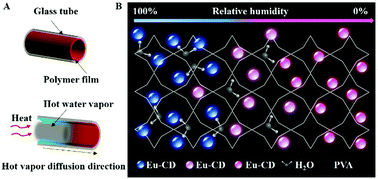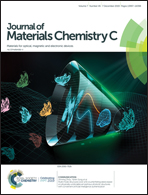A triplet state energy transfer material design concept enables enhanced visualization applications†
Abstract
The emergence and transfer of triplet state excitons across a metal ion–ligand interface represents a significant technological breakthrough, with relevance to various optical applications. However, the regulation of the triplet energy transfer (TTET) process and mechanism via experimental techniques are two challenging topics. Here, an innovative TTET-based donor–acceptor system is proposed by combining the outstanding light absorption of carbon dots (CDs) with the exceptional energy transfer (ET) acceptor Eu3+. Definitive experimental evidence shows that the indirect ET proceeds rapidly and efficiently from the singlet to the triplet of the CDs to the Eu3+. Specifically, the CD singlet energy is not completely transferred to the triplet state. The partially retained CD singlet and Eu3+ emission show remarkable differences in maximum emission wavelength (up to 167 nm). Hence, the ratio of these two emission bands enables the measurement of fluorescence changes more accurately. Interestingly, water molecules not only reduce the fluorescence of Eu3+via vibronic coupling, but also prevent the ET process from the CDs to the Eu3+. This dual regulation of water molecules improves the sensing and visualization effect of the –OH-related environmental changes (e.g., humidity spatial and temporal resolution, H-bonding density and the number of –OH) by simple spectral methods, even by the naked eye.



 Please wait while we load your content...
Please wait while we load your content...